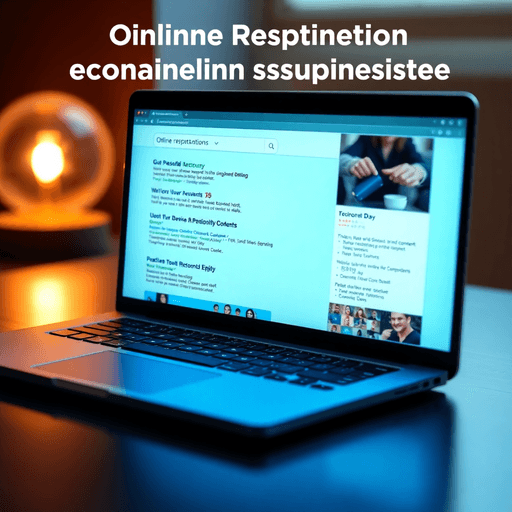Crisis Communication Strategies
Dealing with the drama of public relations mishaps is no walk in the park. It takes solid crisis communication strategies to keep your rep intact. This means getting your act together before things go south and having a plan to handle whatever comes your way.
The Role of Plan Ahead
Getting ready for the unexpected is key to keeping your name in good standing during a crisis. Every business should have a game plan to jump into action, cut the damage, and keep the brand cool as a cucumber.
Here’s how you whip up a good plan:
- Spotting Trouble Before It Hits: Take a look at all the possible dramas your business might face. Focus on the most likely scenarios and get ready with the right messages and actions.
- Form Your Crisis Squad: Pick a team for the job. Lay out who’s the boss, choose a spokesperson, and keep a few worker bees and a wise head in the mix. Decide where you’ll regroup when the storm hits.
| Crisis Bits | What It Means |
|---|---|
| Spotting Trouble | Check what messes could come your way. |
| Crisis Squad | Decide who does what, and where y’all meet up. |
Check out more on getting ready for the worst on our crisis management in pr page.
Smart Communication Moves
Talking sense is super important when things get hairy. It’s all about laying out a plan that keeps the chatter timely, open, and on message. Here’s your cheat sheet:
- Set Your Targets Straight: Know what you’re aiming to do with your communication. Who’s gotta be in the loop?
- Craft Killer Messages: Nail down key messages that soothe your peeps’ worries and tell your side of the story.
- Pick Your Channels Carefully: Figure out where to shout your messages—be it social media, press shout-outs, or emails. Make sure these channels can handle the buzz.
- Keep ’em Believing: Mix clear, quick updates with honesty to keep everybody’s trust.
| Communication Game | What It’s About |
|---|---|
| Targets | Know your goals and who’s gotta hear them. |
| Killer Messages | Get core ideas across clearly. |
| Channels | Pick the right stage to spread your word. |
For fine-tuned strategies for getting your message across, have a look at our corporate communication strategies.
By lining up your crisis communication strategies, you’re priming your team to tackle chaos like pros. Peek at more public relations strategies for extra tips and tricks.
Elements of Successful Crisis Communication
When you’re knee-deep in a crisis, talking your way out smoothly can be a lifesaver. Trust and confidence ain’t whipped up in a hurry; it takes a bit of orchestration. So, what’s the recipe, you ask? Stir in a ladle of honesty, a pinch of timeliness, a generous dollop of authenticity, a dash of humility, plus a whole heap of confidence-building with your stakeholders, and you’re on your way!
Transparency and Timeliness
Transparency and timeliness are like Bonnie and Clyde; they stick together when it counts. When things start to go sideways, dishing out spot-on details is your ace. It stops folk from cooking up wild stories. Speak up swiftly, and let everyone know what’s what, so they can keep their heads on straight.
| Key Aspect | Description |
|---|---|
| Transparency | Serving the truth straight up to your crowd. |
| Timeliness | Getting the scoop out before folks fill in the blanks themselves. |
Say it like it is, and people will know they can rely on you when it hits the fan. Speed shows you’ve got a grip and are quick on your feet—no shrinking violets allowed. For more juicy tidbits, check out our guide on crisis stuff in PR.
Authenticity and Humility
Keeping it real and keeping it humbleise a dynamic duo nobody should ignore. These traits are what make folks feel a real bond, even when the going gets tough. Lay it out with forthrightness about the hurdles and how you’re handling them, and watch your credibility meter rise.
| Authenticity Ingredients | Humility Ingredients |
|---|---|
| No BS Talk | Owning Up to Blunders |
| Staying the Course | Fessing Up |
| Showing You’re Invested | Saying Sorry When It Counts |
Being real proves you’re not a shady character, and being humble means you ain’t too proud to make things right. More gems on this can be found in our piece on company gabfests.
Building Stakeholder Confidence
To keep your stakeholders’ heads above water, stick with plain, no-nonsense talk that’s all about the facts. During a storm, reassure them you’re doing your utmost to batten down the hatches and avoid any repeat episodes.
Confidence Builders:
- Keep your story straight on the airwaves.
- Let ’em in on the fixes underway.
- Bend your ear to hear ’em, and show you’re on the ball.
| Confidence Builder | Breakdown |
|---|---|
| Same Old Story | Clear notes on every platform keep the crowd calm. |
| Game Plan | Spill the beans on how you’re fixing up. |
| Back-and-Forth | Tune in and take note of what folks are saying. |
If you juggle honesty, swiftness, the real deal, and humility just right, you’re more likely to hang onto your folks’ faith for the years to come. Scope out our in-depth go-to on holding onto that street cred for a treasure trove of know-how.
By zeroing in on these tricks, you can keep the ship steady through the storm, save your good name, and keep the wheels turning.
Crisis Management Examples
Taking a peek at famous crisis management cases gives us a sneak peek into the kind of public relations moves that can save or break a company’s image. Let’s check out how Johnson & Johnson, Cracker Barrel, Pepsi, and United Airlines dealt with their PR mess-ups.
Johnson & Johnson’s Tylenol Incident
The 1982 Tylenol scare is like the godfather of crisis management stories. After some Tylenol capsules got laced with cyanide and caused deaths, Johnson & Johnson didn’t mess around. They stopped advertising, shouted from the rooftops to warn folks, and yanked 31 million bottles off the shelves, costing a jaw-dropping $100 million. Their open-book approach and quick moves helped win back public trust. This whole episode rings the bell about keeping it real and acting fast when stuff hits the fan.
| Factor | Response |
|---|---|
| Bottles recalled | 31 million |
| Recall cost | $100 million |
| Warning and ad stop | On the spot |
Cracker Barrel’s Silence Strategy
Cracker Barrel took the “zip your lips” strategy when it fired an employee over marital status and sexual orientation. But hush-hush didn’t fly—it just made the backlash louder. By not stepping up to bat and talking, they got tangled in more drama. This all shines a light on why chatting it out and keeping folks in the loop is the way to go when trouble brews.
To stay savvy, businesses can dig into public relations strategies focused on regular convo and quick reactions.
Pepsi’s Swift Apology
Fast forward to 2017, and Pepsi had its fire to put out when its ad starring Kendall Jenner rubbed people the wrong way. They reacted fast, pulling the ad and saying “sorry” before things got out of hand. Moving quickly and showing a little heart helped them dodge major damage down the line. This is a testament to how a quick and heartfelt reaction can keep the trust train rolling.
United Airlines’ CEO Response
United Airlines hit turbulence in 2017 when a passenger was dragged off a flight, and the CEO’s first go at saying sorry was about as heartfelt as a shopping list. It took a second, more genuine apology to start repairing the damage. This blip on the radar is a classic tale of how being genuine and showing a bit of care can keep you from getting eggs on your face and fits like a glove with solid corporate communication strategies.
For more nuggets on nailing communication during sticky situations, feel free to browse our articles on crisis management in PR and reputation repair tips.
By picking apart these examples, businesses can snag some key takeaways on why being upfront, quick to act, and a tad empathetic are the golden tickets during crisis flair-ups.
Building a Crisis Communications Plan
Crafting a solid plan for handling hiccups in public relations is like buckling up for a bumpy ride — you’ll thank yourself for being prepared. Let’s chat about sizing up potential crises, keeping our messages on point, getting the right folks on your team, and how to spread the word like butter — all to keep our stakeholders feeling warm and fuzzy.
Scenario Identification and Messaging
Spotting possible bumps in the road and having just the right words ready is key. We gotta think about stuff that might trip us up. Maybe a product goes wonky, some sneaky hacker nabs our data, or heaven forbid, a scandal erupts.
| Trouble Brewing | Key Messaging |
|---|---|
| Product Crisis | “Our top concern is your safety. We’re on it!” |
| Data Mishap | “Protecting your info is priority one. We’re tightening the hatches.” |
| Scandal Shocker | “We value honesty. We’re looking into it thoroughly.” |
Let’s keep what we say steady, true, and reassuring. Getting straight to the point with kindness helps you keep everyone’s faith intact.
Crisis Response Team and Protocols
Assembling a crack team and a game plan is how we roll when stuff hits the fan. We need our heavy hitterss: the folks who deal the cards, the ones who give the nod, and the ones who hit the ground running.
| Role | Responsibility |
|---|---|
| Spokesperson | Talks the talk officially |
| Decision-Maker | Calls the shots |
| Implementers | Make the magic happen |
Everyone needs to know who’s calling the shots and what’s what when things get hairy. Knowing the dance moves ahead of time lets us respond fast and smoothly. We should pick a trusty hangout spot to keep our heads together when the chips are down.
For all the deets on crisis juggling, check out our crisis management in PR page.
Messaging Distribution and Relationship Building
Getting our message out on the double is how we keep everyone in the loop. A mix of old-school and digital smoke signals helps us hit the mark — think dark pages, intranets, tweets, calls, get-togethers, and the classic press.
| Communication Channel | Purpose |
|---|---|
| Dark Webpage | Headquarters for crisis bulletins |
| Intranet | Employee-only updates |
| Social Media | Fast-news alley |
| Texts/Phone | SOS alerts |
| Town Hall | Face-to-face conversations |
| Media | The word to the masses |
A go-to media list is our safety net, extra handy if we’ve got PR experts in the mix. Getting chummy with emergency folks and community champs boosts our messaging firepower.
Diving into social networks like Twitter and Facebook lets us stay in the chat and shoot out fast alerts. Curious about more of our tricks? Peek at our piece on corporate communication strategies.
With our crisis plan in our back pocket, we’re set to grow vibes of openness, staying power, and trust. Want more scoop on keeping our rep shiny? Head over to reputation management techniques for a deeper dig.
Ensuring Effective Crisis Response
When things take a wrong turn in public relations and reputation, it’s all about hitting the ground running. Let’s break down some solid tactics to tackle tricky situations and keep our good name intact.
Speed and Empathy in Communications
In the hustle of a crisis communications plan, being fast and human is the winning combo. Moving quickly while genuinely caring about who’s hurting helps us hold the story reins and keep trust alive.
| Action | Response Time | Empathy Level |
|---|---|---|
| Initial Acknowledgement | Within 1 hour | High |
| Detailed Statement | Within 24 hours | Moderate |
| Follow-up Updates | Regular intervals | Consistent |
By jumping in fast and showing we give a darn, we let folks know we’ve got it under control. It’s all about trust and making them feel secure in our hands.
Alignment of Stakeholders
Getting everyone on the same page is a game changer in crisis land. The person in charge needs to rally the troops and keep the story consistent.
Steps to Align Stakeholders:
- Lay down crystal-clear info pathways.
- Pinpoint who needs to hear what and when.
- Set up rules for when and how issues get escalated.
- Make sure everyone’s preaching the same sermon.
Having a crisis plan ready, giving it a dry run, and gathering decision-makers when stuff hits the fan ensures we sing the same tune. This harmony keeps the faithofh everyone involved. For keeping corporate chatter smooth, check out corporate communication strategies.
Practice and Preparation
When it comes to a crisis communications framework, being prepped is the secret sauce. Getting the team familiar with the groove before chaos ensues means we handle stuff like pros when push comes to shove.
Components of Effective Preparation:
- Scenario Identification: Run through various crisis scenes.
- Team Roles: Map out who’s doing what.
- Communication Channels: Make sure everyone can handle the selected tools and platforms.
- Regular Drills: Stage practice runs to test and polish the plan.
Consistent training and mock scenarios keep us quick on our feet when things go sideways. Ready responses aren’t just speedy; they’re also spot on, and that’s vital for managing how we’re seen in the storm.
Weave these moves into your crisis playbook to keep cool and protect your reputation when times get tough.
Role of Social Media in Crisis Management
In public relations, social media is likeae secret weapon for handling crises well. It gives companies a way to talk quickly, deal with issues head-on, and keep things open when the going gets tough. Here, we’ll talk about how using social media, teamwork, and fresh communication tactics can seriously boost crisis management.
Making the Most of Social Networks
Platforms like Twitter and Facebook are now the go-to for spreading the word quickly and accurately during a crisis. Half of U.S. adults got their news from social media in 2022, proving it’s a major player in the info game.
- Twitter: Known for its super speedy updates and sharing abilities, Twitter’s perfect for real-time crisis talk. Companies can shoot out updates and guide folks to detailed info as things develop.
- Facebook: With handy tools like Crisis Response, Facebook lets you share detailed updates and do safety checks. Whether you need to keep the community in the loop or make in-depth announcements, it’s got you covered.
| Platform | What’s Helpful | Best For |
|---|---|---|
| Quick updates, sharing links | Instant info | |
| Crisis Response, detailed notes | Deep communication |
Organizations need to keep active on these platforms to manage their reputation during crises better. Making sure followers know where official updates come from is a big part of being ready for anything.
Teamwork Makes Crisis Work
Assembling a strong crisis communication team is key. They’re the folks in charge of chatting with stakeholders, replying to comments, and making sure info is spot on.
- Team Roles: Give everyone a job, like creating content, keeping an eye on social media, or dealing with the public’s questions.
- Central Command: Think of a “war room” setup, where everyone works together in one place to manage the crisis live.
- Practice Runs: Regular training can help the team be ready for anything, making sure they know the ropes of communication and platform tricks.
Smooth teamwork ensures the organization speaks in a united voice, keeping messages clear and consistent.
Creative Communication Tactics
While getting the right info out fast is crucial, spicing up communication tactics can amplify crisis management on social media.
- Go Live: Use live streaming on Facebook or Instagram to give real-time updates, field questions, and be transparent.
- Visual Aids: Infographics, charts, and videos can turn complex info into something easy to digest.
- Instagram Highlights: Keep key info handy on Instagram Highlights so followers can find what they need quickly.
| Strategy | Tools | Perks |
|---|---|---|
| Live Video | Facebook Live, Instagram Live | Immediate updates, openness |
| Visuals | Infographics, videos | Easy-to-grasp info |
| Instagram Highlights | Story highlights | Instant update access |
Integrating these methods lets organizations not only communicate well but also connect with their audience in a more meaningful way during crises. For more tips, check out reputation management techniques and corporate communication strategies.
Social media’s role in crisis management is massive. By tapping into platforms, cultivating teamwork, and trying out creative tactics, organizations can tackle crises with more confidence and success.









